Would it surprise you to hear that one of my favorite playable video game dragons can be found in a game that otherwise has nothing to do with them? It surprises me that so many dragon-centric games released since have failed to surpass this personal benchmark I’ve apparently set as to what makes a dragon enjoyable to play as. What did developer Incognito Entertainment (whose previous credentials only included a few PS2 titles in the Twisted Metal series) do right in their 2003 PlayStation 2 release of War of the Monsters that keeps me coming back years later?
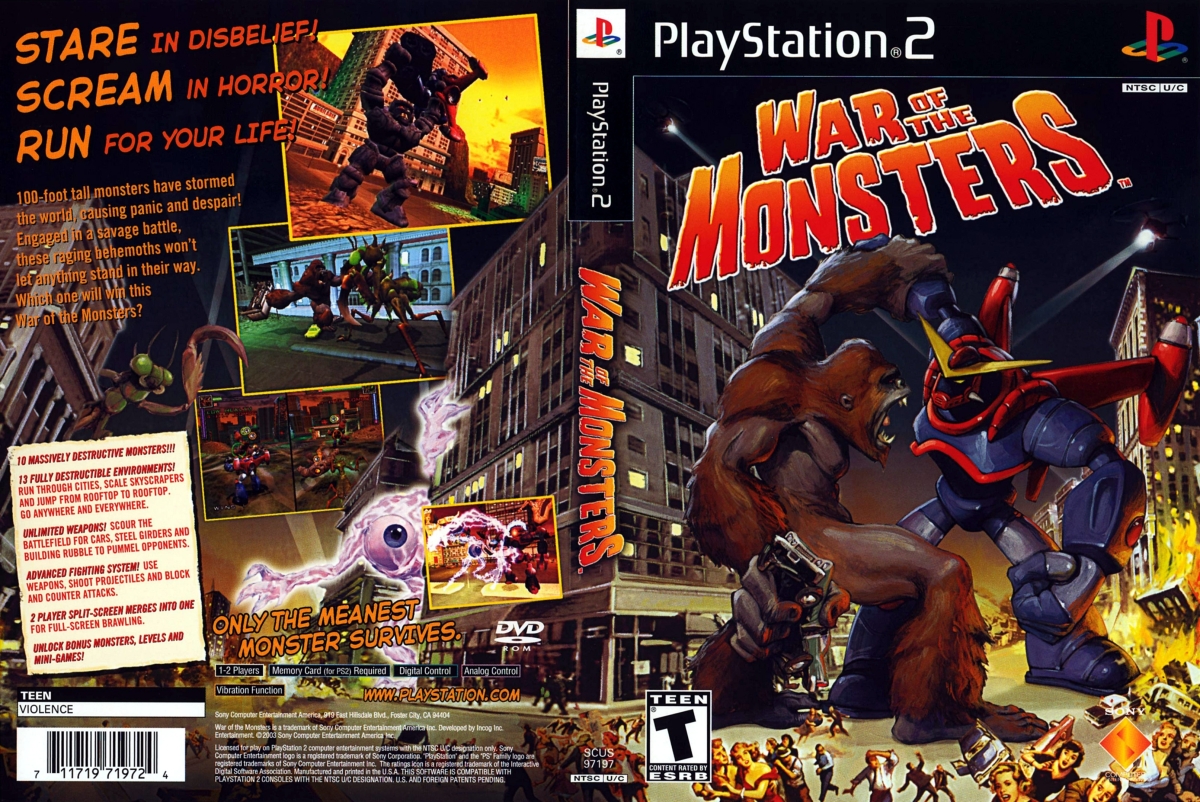
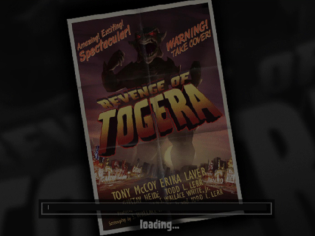
War of the Monsters is a 3D brawler love letter to mid-century monster flicks. In the aftermath of an alien invasion, radioactive green ooze seeps out of crashed flying saucers, mutating humans and animals into giant monsters. You take control of these monsters (or in some cases, colossal robots created by the government) to brawl it out in a series of open city environments, destroying whatever buildings or vehicles might be in your way. The game’s story mode culminates in a battle against the alien leader in the United States Capitol. All-in-all, it’s an incredibly enjoyable fighting game that leans hard into the campiness of 1950’s sci-fi films, to great effect.
Gameplay consists of several modes, including the story Adventure mode, single-player quick play, multiplayer, and unlockable minigames. You can fight with up to four monsters in a map, and multiplayer is two-person splitscreen. Minigames include a city destruction competition, dodgeball, and one where you launch your monsters off the tops of buildings to land on distant targets (the most fun part of this one being the King of the Hill mode in the case of a tie, where your goal is to be the last one standing on top of a towering skyscraper).
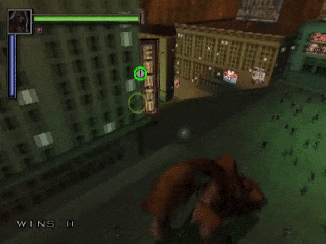
The ten playable monsters have mostly the same basic mechanics: a light and heavy attack, two special attacks (short and long-range), some sort of small-damage ranged attack, block, jump, climb, pickup/throw objects, etc. Each monster plays significantly differently, however. Some are faster climbers, some hit harder, some have a quicker rate of projectile firing. Even attacks and specials vary greatly between monsters; for example, Robo-47’s long range special is a homing missile, while Agamo rips off his own head to use as a melee or thrown weapon. Attacks can be chained together into different combos that are unique to each monster.
You have a stamina bar that is spent to perform attacks and specials, fire ranged attacks, and in a couple of special cases, fly (we’ll get to this shortly). Stamina can be refilled by hitting monsters with thrown objects, grabbing pickup orbs, or by just waiting a few seconds for it to recharge to the halfway point. Each time you fill your stamina bar fully (indicated by a second pink bar over the blue one) you’re granted another special attack chit. The stamina systems works well, forcing players to balance attacking with running away to gather energy refills or debris to throw, which encourages more interaction with the stages themselves instead of simply whaling on each other.
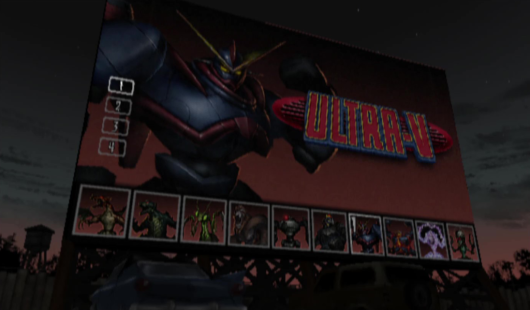
Extra characters and skins can be unlocked after earning tokens in Adventure mode, with each character having four skins to choose from. You can also unlock minigames this way. Adventure mode isn’t just good for getting tokens, however. Once Adventure mode is completed with a specific character, you’re treated to a short clip of that monster’s origin story, which feel straight out of a 50s monster movie. Preytor the giant mantis was the result of a science experiment gone wrong, and Kineticlops (a floating eyeball suspended in electricity) was a poor security guard mutated when an alien ship crashed into a power plant. Godzilla Togera the dinosaur rose irradiated from the sea as a result of another crashed ship. Although usually less than 30 seconds long, these clips add a nice extra sprinkling of creature feature flair.
One of the unique highlights of this game, especially when playing splitscreen multiplayer with friends, is the sheer amount of environmental interactions there are within each arena. There’s a total of 13 stages to fight in, ranging from an island airport to a nuclear power plant. Almost every building can be leveled (which will immediately kill any monster that happens to get caught underneath), debris can be picked up and thrown at enemies (often impaling them and stopping them in their tracks if it’s a sharp object), and most levels have some sort of unique set pieces that can be destroyed and used. One of my personal favorites is the flaming dragon head found in Gambler’s Gulch that will explode when it hits a monster.
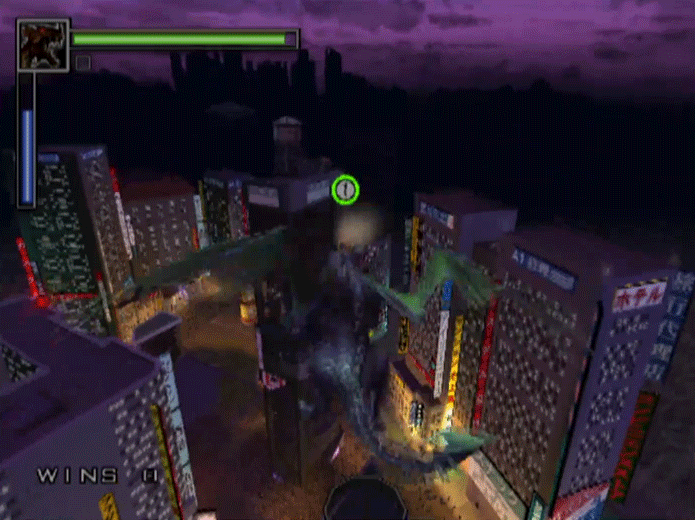
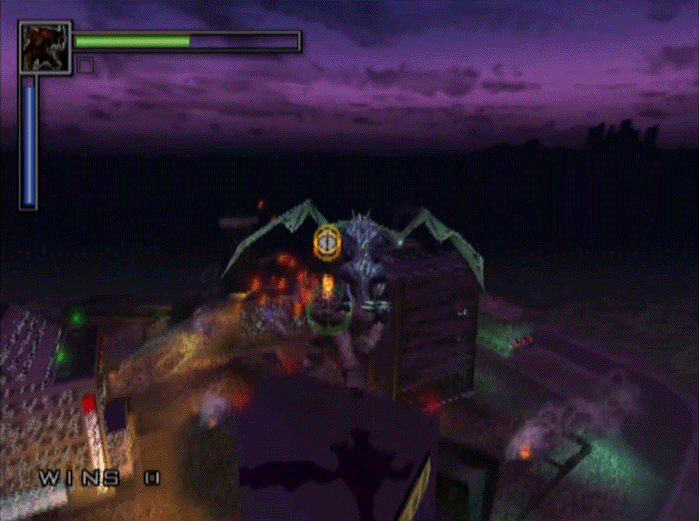
Several levels can also be interacted with in more extreme ways. You can cause a nuclear meltdown at Atomic Island power plant, leveling most of the stage. There’s a volcano in Club Caldera that will send flaming rocks hurtling towards enemy monsters when someone triggers it. Tsunopolis has a flying saucer that causes a tsunami to flood the entire level when hit with a thrown object. And in a couple of levels, after enough destruction is wrought, earthquakes will trigger and leave gaping holes throughout most of the arena. The amount of environmental desecration one can cause provided endless hours of enjoyment when playing this game growing up.
War of the Monsters ranks as one of my favorite games to this day, and I’ll still pull it out from time to time. Usually, that desire to play is triggered by an urge to rain fire and destruction from the skies as a dragon, which brings us to the star of this article: Raptros.
IT CAME FROM THE SKIES
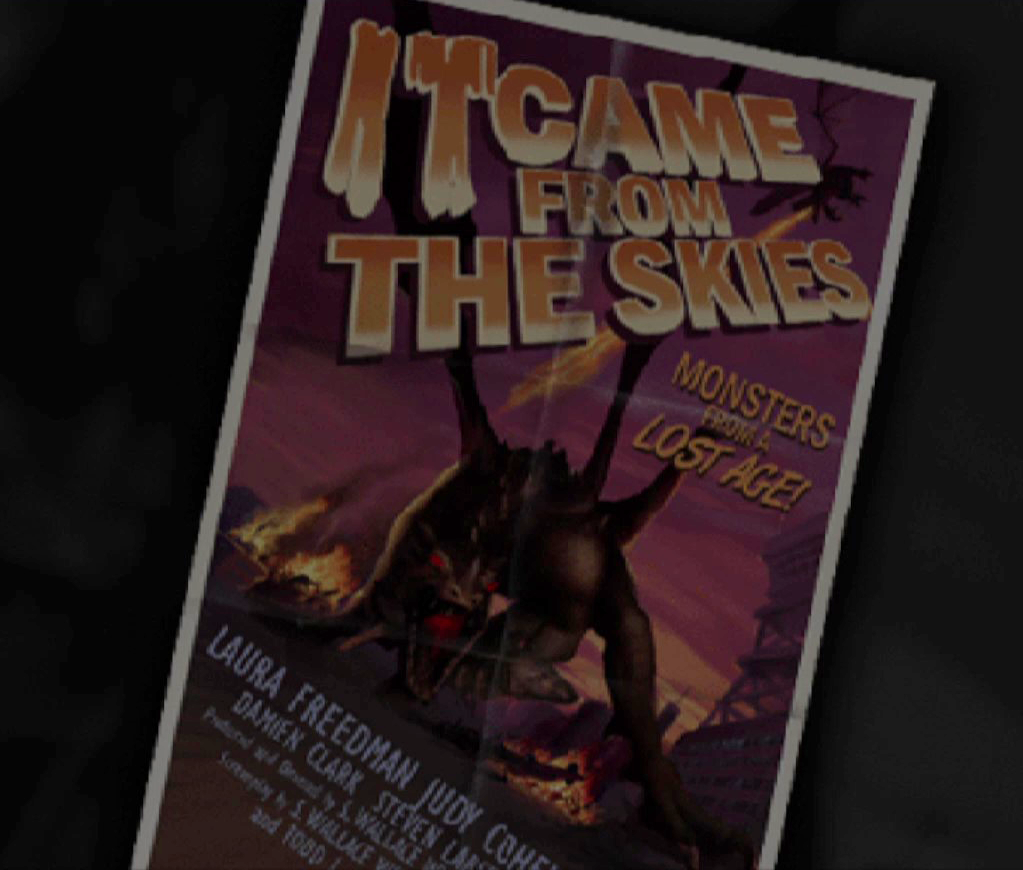
Hands-down number one character in War of the Monsters for me is this bad boy: Raptros the dragon. One of only two monsters in the game capable of limited flight (the other being Preytor the mantis), playing as Raptros meant most friends I played against weren’t fully prepared for what was about to come.
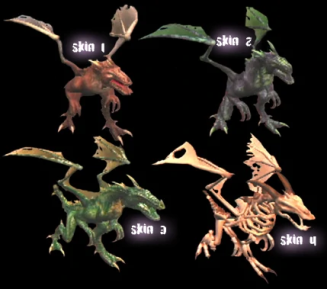
Raptros is one of the few characters not available to play as right off the bat and must be unlocked via tokens. His default skin is a reddish-brown, and other skins include a purple-and-green dragon, a fully green dragon, and a completely skeletal dragon. Raptros is also the only character without a clear origin story, as he has no origin video unlocked after beating Adventure mode, and no backstory is explained during the rest of the game (except for the implication on his level poster that he has prehistoric roots). Interestingly, according to The Cutting Room Floor, a placeholder video for the dragon character exists, but a finished origin clip was sadly never added. Raptros appears in Adventure mode when you’re pitted against a pair of them in the stage Century Airfield, an airport located somewhere in the Pacific.
In terms of basic mechanics, Raptros is pretty middle-of-the-pack, with medium damage and medium firing speed projectiles, and moderate pace climbing. He doesn’t hit especially hard, but you don’t pick him to play as a tanky character or a heavy hitter. As mentioned before, Raptros’ unique characteristic is his ability to take flight. Jumping with X, then pressing X again causes him to flap his wings and climb upwards. This requires a little bit of timing to keep him in the air, as another button press is required to for each flap, or you can hold X to glide. Each stroke of his wings drains his stamina bar slightly (you get approximately 20 wingbeats on a full bar, according to the War of the Monsters wiki), but sustained gliding doesn’t take any extra stamina.
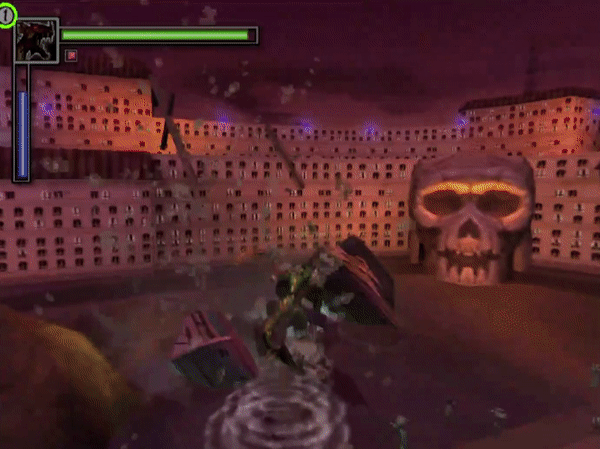
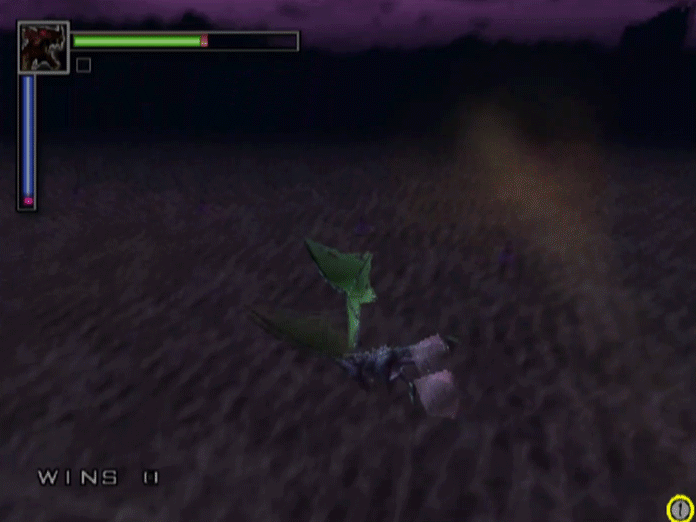
With a bit of practice and enough height, Raptros can usually glide around an entire level. Each button press feels satisfyingly weighty, like you get a sense of each heavy wingbeat to keep your dragon airborne. He maneuvers quickly and easily when gliding, and I always get a slight giddy feeling whenever I bank sharply upwards to land after a dive.
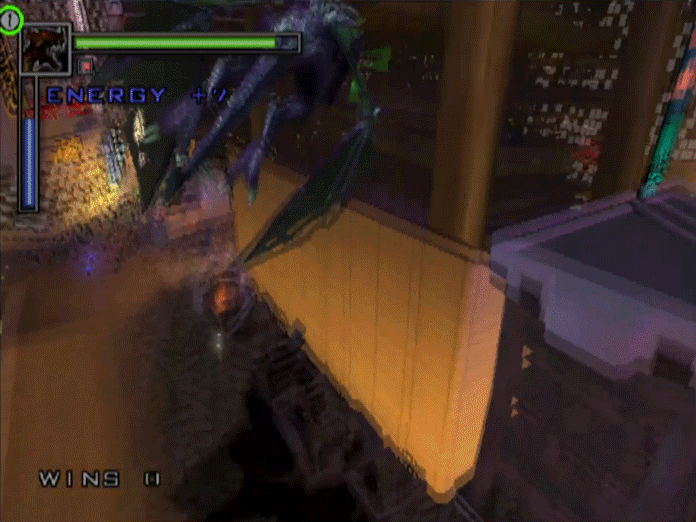
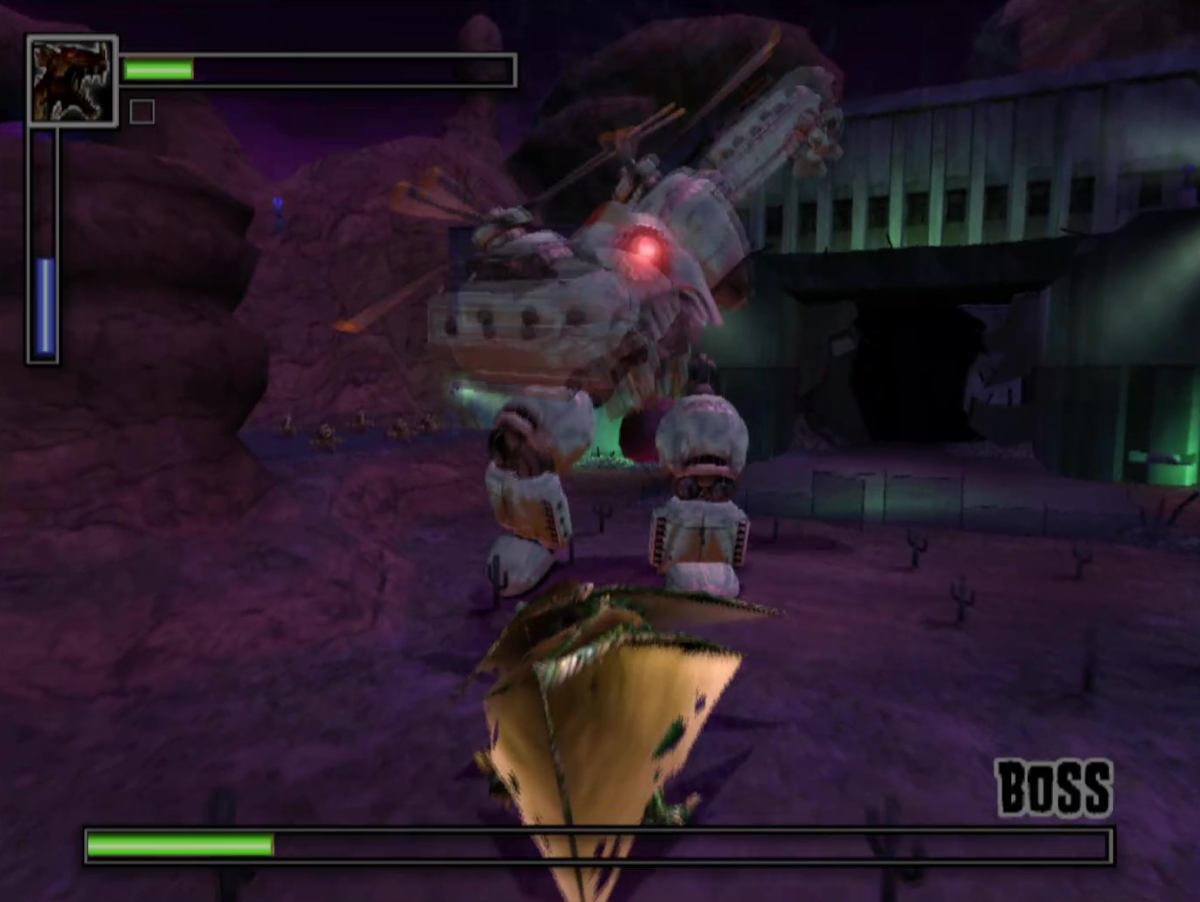
One thing I really love about Raptros in this game is how he gets his entire body involved in most of his animations. His body undulates with every wingbeat, with his arms clawing the air. He smacks enemies with his wings, uses them to shield himself when blocking, and they even help him climb up the sides of buildings. He’s a well thought-out character that doesn’t just feel like a dragon skin slapped on another monster. His flight mechanics even differ from Preytor’s, as Raptros uses less stamina to flap and is capable of gliding farther. He spews a cone of fire from his mouth as a long-range breath attack, which sets enemies alight so they damage for several seconds afterwards.
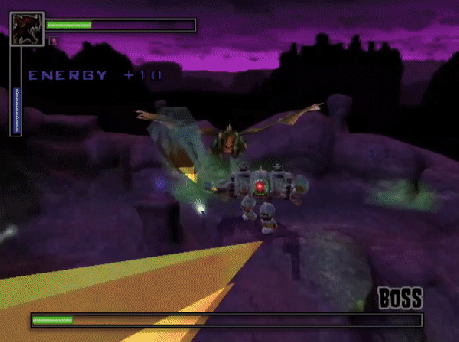
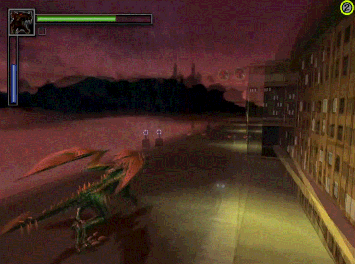
Design-wise, Raptros is well executed. Pulling off a bipedal dragon successfully, without just making it look like Godzilla with wings, seems to be difficult in games. Like his name implies, he’s almost raptor-like, with a slightly hunched posture, making him feel more like a beast. His tail swings about as he moves, but not in a floppy, ragdolly, afterthought way that many video game dragons suffer from. Even his running animation has a bit of a dinosaur-esque strut.
I’m happy to see his wings extending from his shoulders and not further up the neck or down the sides. This helps to make his movements seem more realistic; you can feel the effort his wings exert on those shoulder muscles. You can see that the devs clearly thought about how the wings would be attached when looking at the bone connections on the skeletal skin. If I had to be nitpicky, I think the general modern consensus on dragon wings has the membranes to attach lower on the body, closer to the hips, instead of at the wing joints like we see in Raptros’ case. In theory, this gives the wing more surface area and makes flight a little more believable, but we see this slimmer style of wings in a lot of older games. Apart from being an aesthetic choice, I have to think that it’s just easier to implement in terms of animations and gameplay.

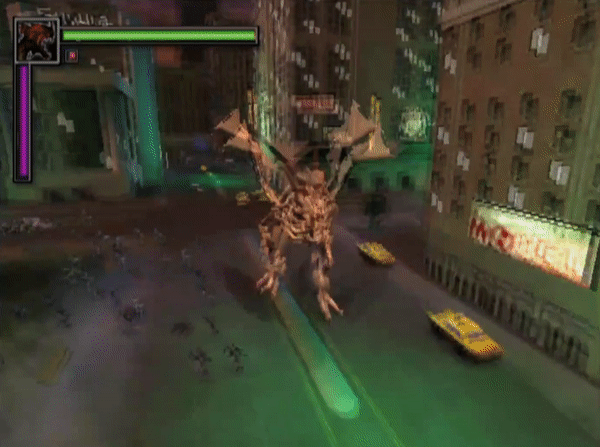
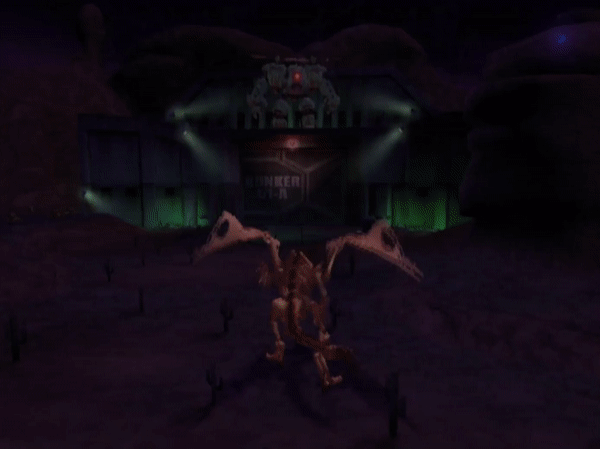
I’m impressed that Incognito Entertainment came out with such a great playable dragon on the PS2 and in a game like this. They really nailed Raptros’ design, animations, and fighting style to make him feel satisfying and totally unique to play as.
Overall, I think War of the Monsters holds up well today and is worth a visit if you haven’t played it before. It has aged a bit, and the controls and camera can feel a little on the clunky side. As fun as Raptros is to play, he does introduce a bit of a cheese element that can be frustrating to play against. But the game is especially enjoyable with friends, even just to stomp around a city destroying buildings and just generally causing mayhem. Or, if you’re just looking for a new dragon gameplay experience, checking out Raptros in War of the Monsters is well worth your time.
War of the Monsters was originally released on Playstation 2, but it has since become available digitally for Playstation 4.
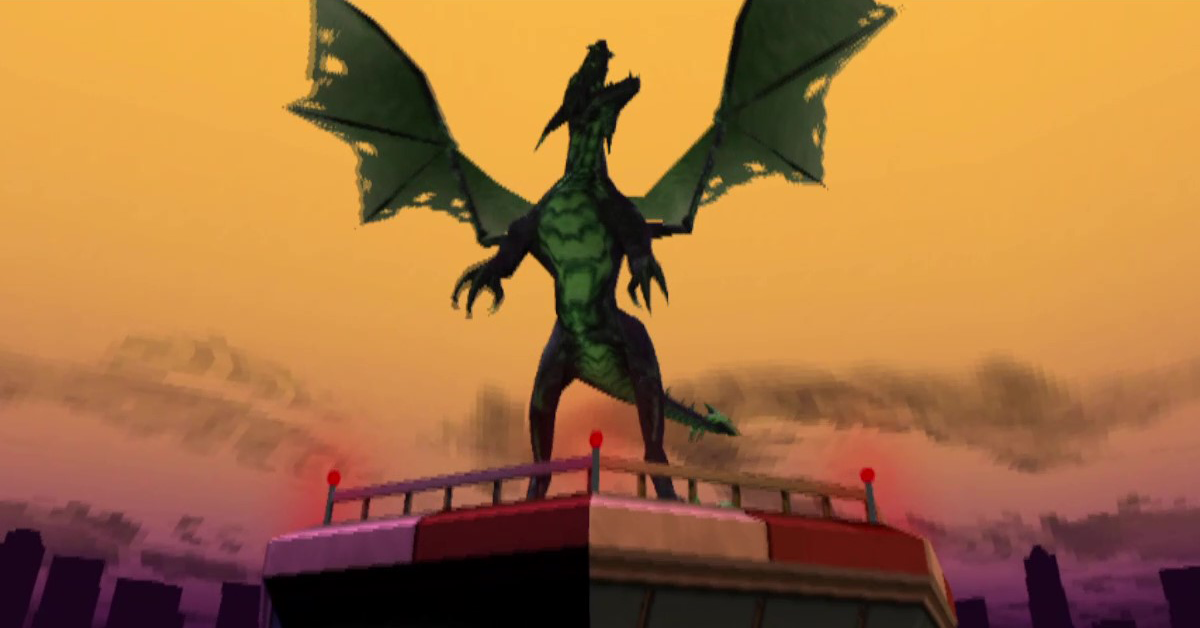

Reminds me in spirit of the monster fighting game from my childhood, Godzilla Destroy All Monsters, but honestly this game looks like it has so much more love and care poured into it. I’d play as Rodan for similar reasons in Godzilla, but his flying wasn’t nearly as weighty as Raptros’ looks here! Definitely going to have to figure out how to play this
I believe it’s available on the PS4 store, and I wouldn’t be surprised if it shows up in the library of the new Playstation plus highest tier.